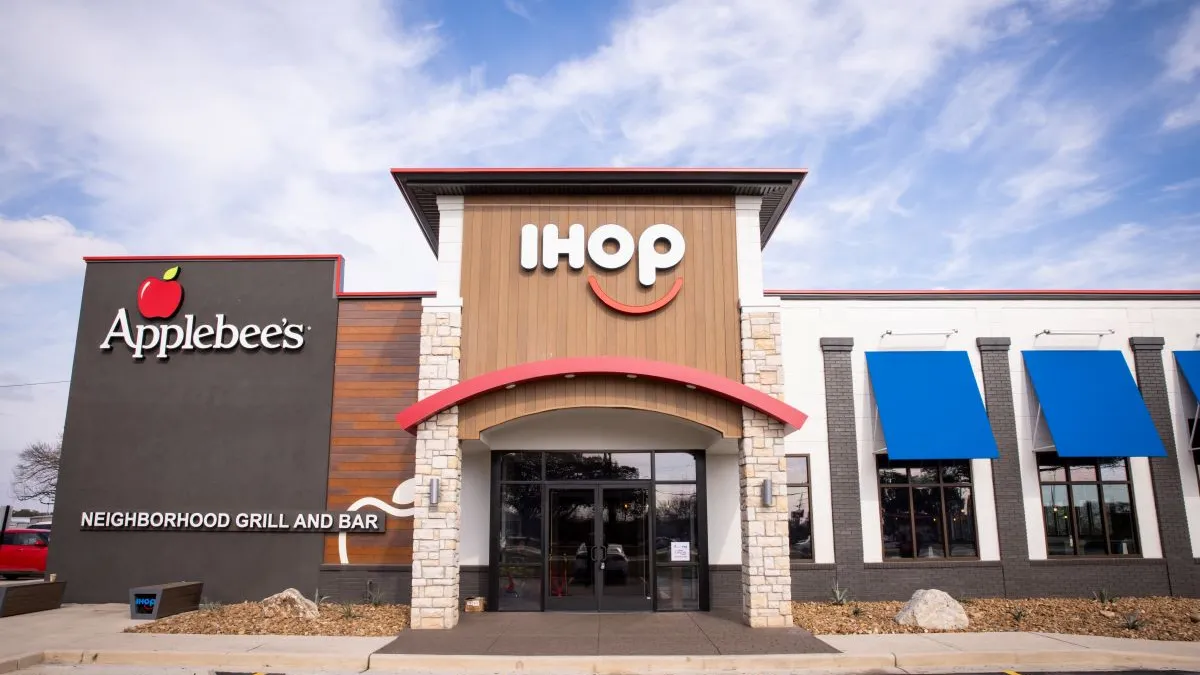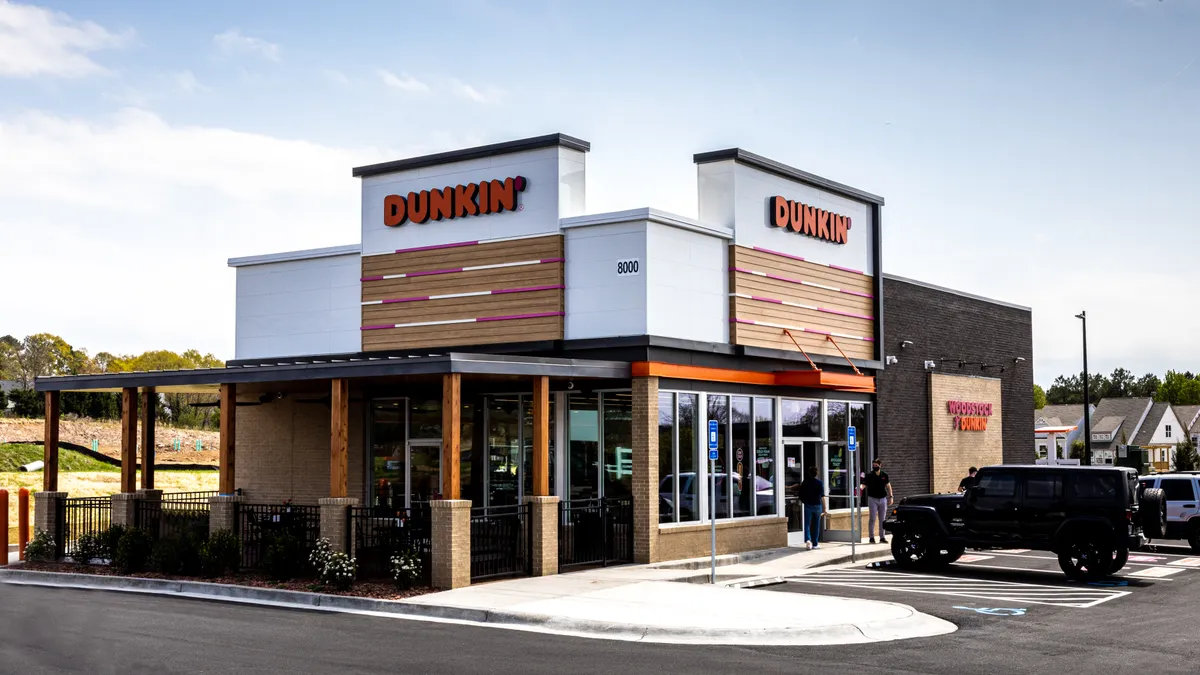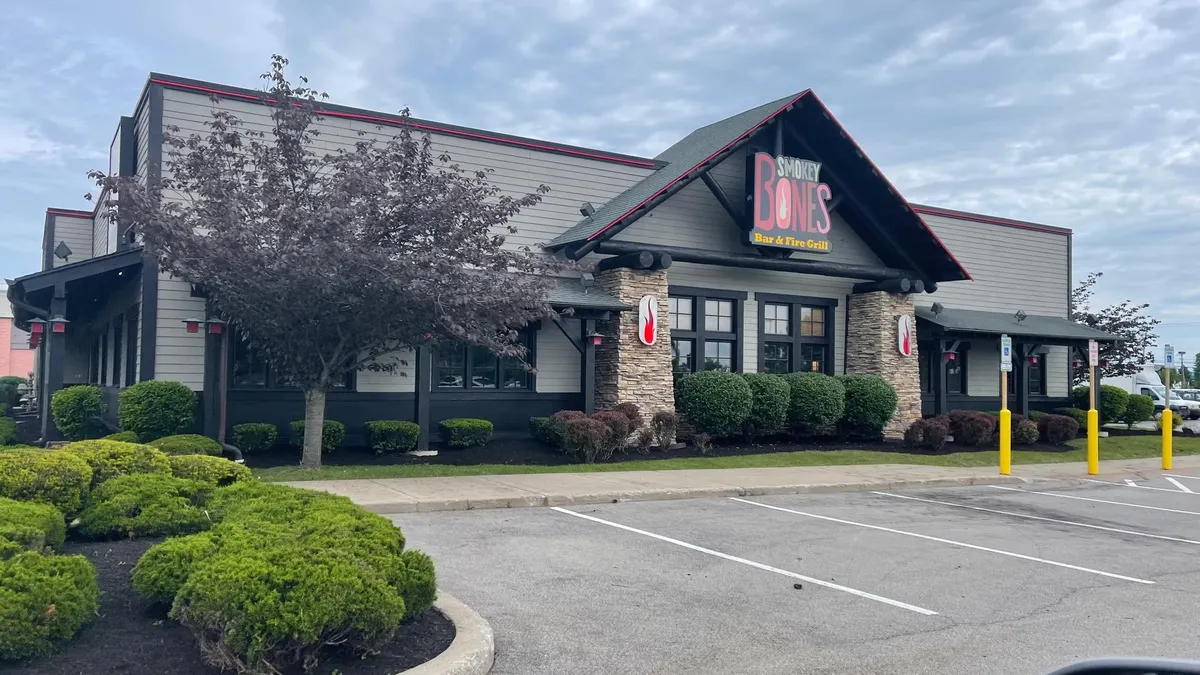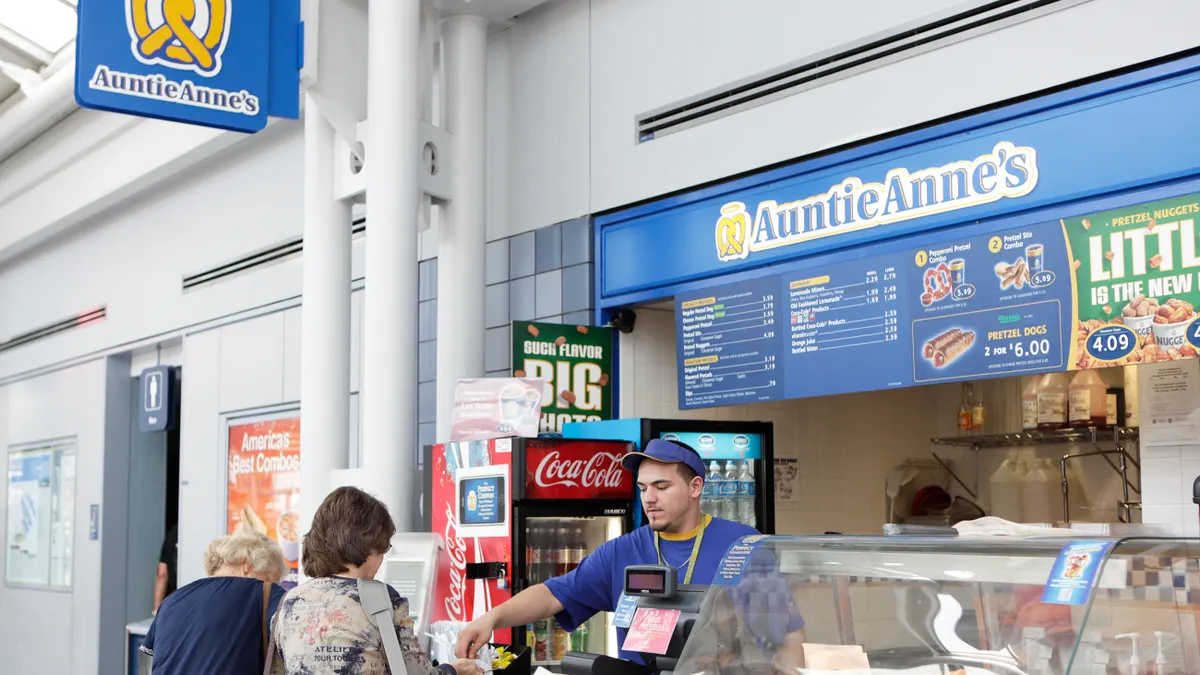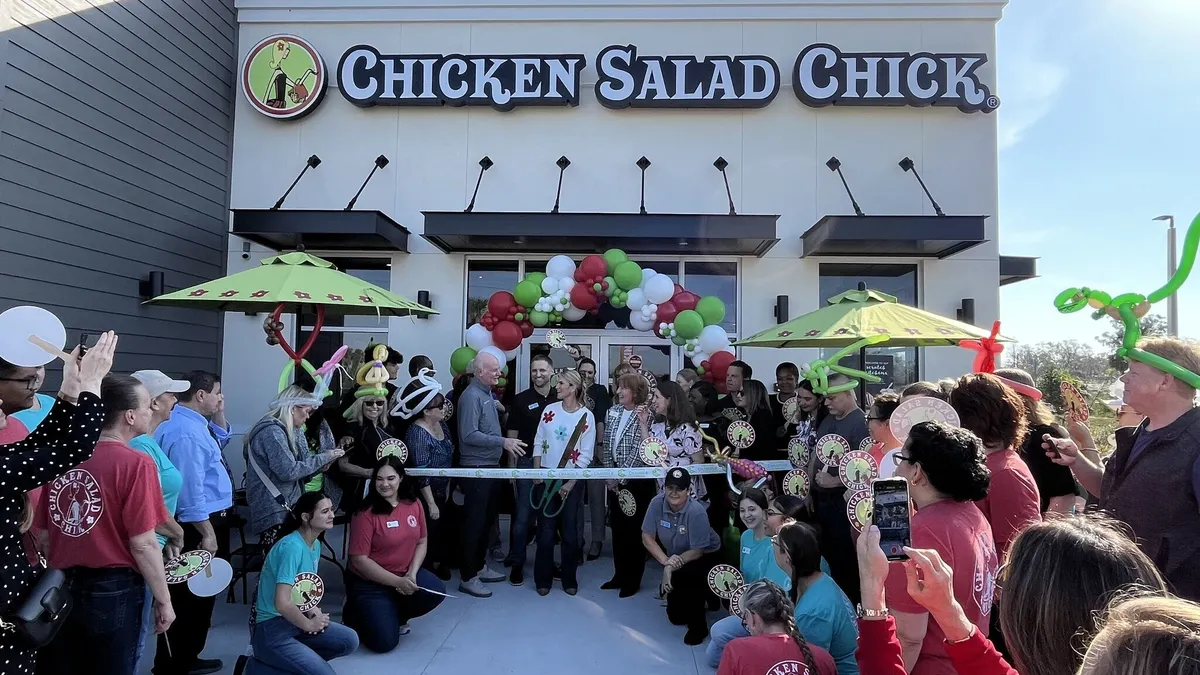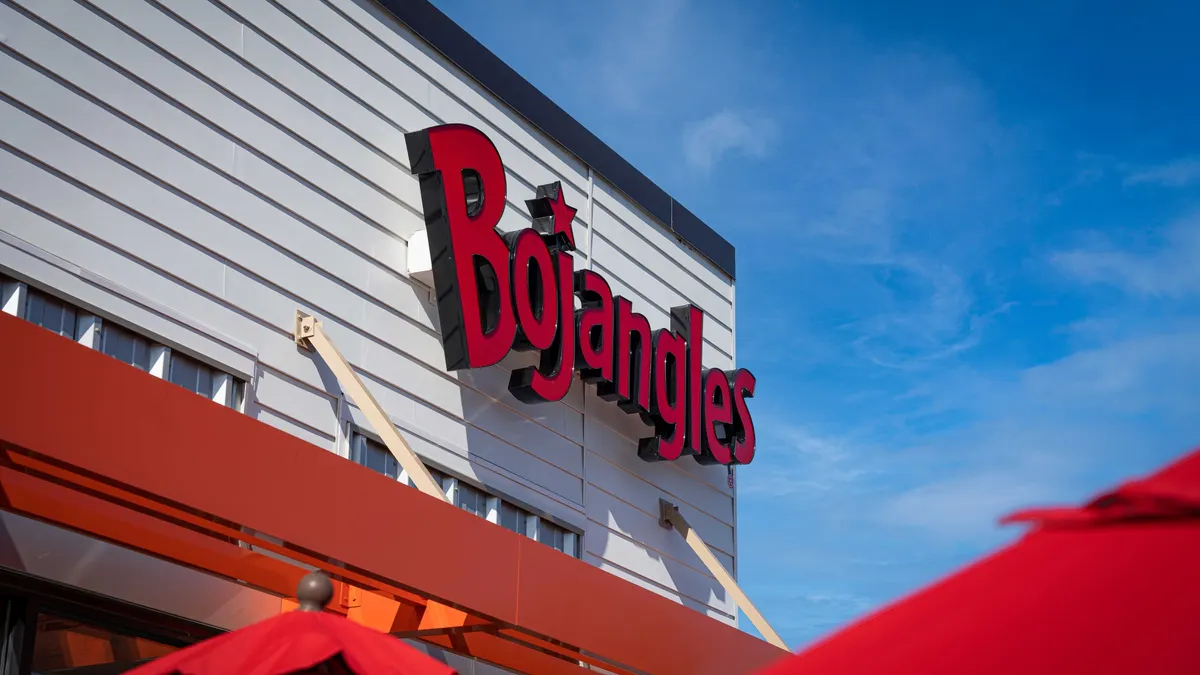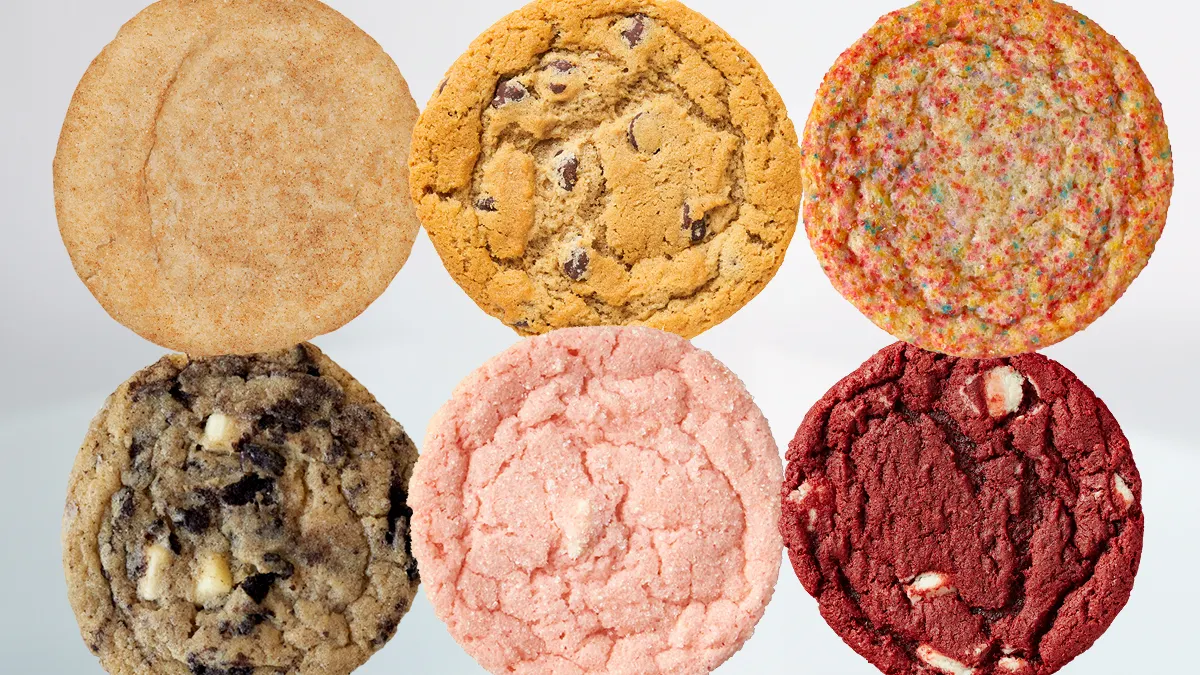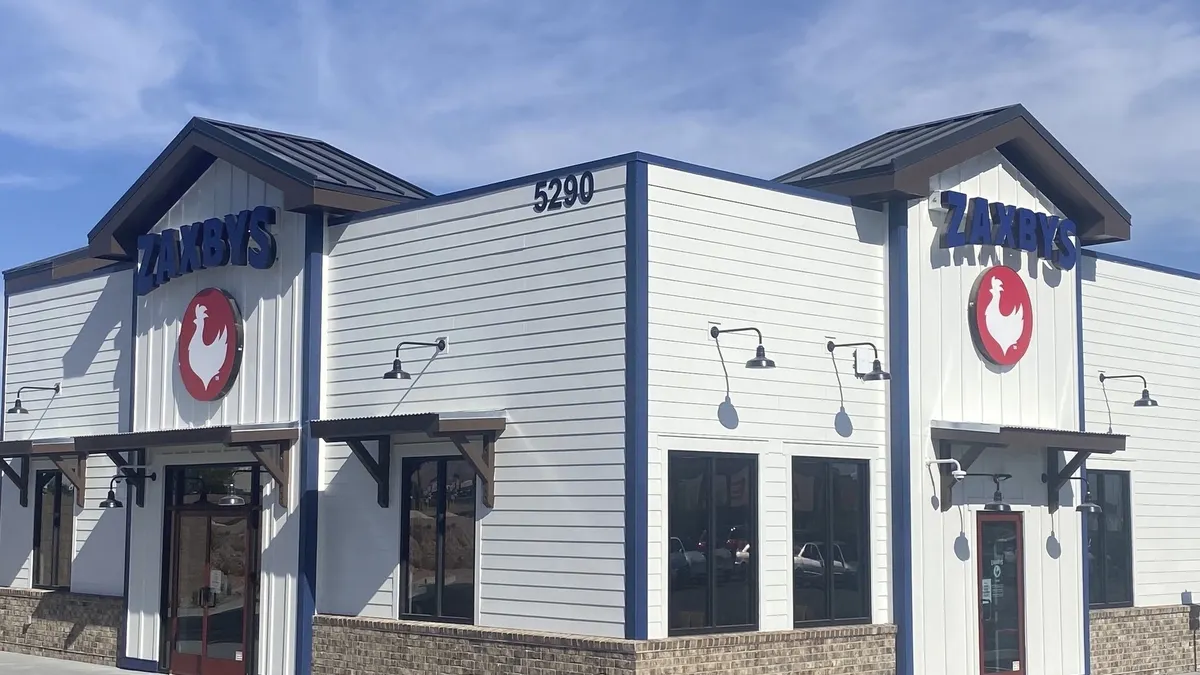It’s only been a couple of months since Dine Brands opened its first domestic dual-branded IHOP/Applebee’s restaurant in Seguin, Texas, a suburb of San Antonio, but the company is already seeing significant opportunities with this store model.
The unit is “performing above expectations” and generating three times the sales compared to when it was a standalone IHOP, Dine Brands CEO John Peyton said Wednesday during an earnings call.
Guests particularly like the combined menu of brand favorites, he added. While IHOP is largely focused on breakfast, Applebee’s targets the dinner daypart, creating a complementary menu.
Dine Brands is on track to have 14 dual-branded restaurants in the U.S. by the end of the year, Peyton said. And Dine’s San Antonio franchisee has already signed up for another eight dual brands to open up in the market over the next two years.
“As a result of this strong showing, we continue to receive interest from both new and existing franchisees to build or convert to this new concept,” Peyton said.
In addition to opening co-branded restaurants, the company is remodeling Applebee’s locations, opening new IHOPs and improving recently acquired company-owned restaurants to boost operations and sales.
The company’s development strategy could help grow traffic and sales, which continued to struggle across both IHOP and Applebee’s during the first quarter of 2025. Domestic comparable sales fell by 2.2% for Applebee’s and 2.7% at IHOP during the quarter, according to an earnings release.
Franchisees continue to buy into dual-brand restaurants
Some franchisees are also expanding their portfolio by acquiring Applebee’s restaurants. A current Applebee’s and IHOP franchisee bought six Applebee’s restaurants while another IHOP franchisee bought five Applebee’s in Wisconsin. All of these restaurants will be converted to dual-branded restaurants or undergo Applebee's re-imaging program, dubbed “Lookin’ Good,” which launched earlier this year.
“These deals in particular are positive indicators that our development strategy is resonating with our franchisees for two reasons,” Peyton said. “First, it's a great example of franchisee cross pollination between our brands, and second, it shows that our franchisees are engaged and interested in growing our brands, particularly with our new restaurant formats.”
Going forward, U.S. development will be a mix of dual-branded restaurants and standalones. IHOP continues to open 40 standalone restaurants annually, for example. Some of Applebee’s largest franchisees are also starting to build new units, as well.
Dine completed its initial work on an Applebee's prototype and will build a company-owned restaurant with the new model, which is expected to trim $1 million from buildout costs, in the last half of the year. Peyton didn’t share any additional information on the features of the prototype.
The mix between standalones and dual-brands will depend on what is practical for each territory because “not every IHOP can take an Applebee’s and not every Applebee's can take an IHOP because of the adjacent brand next to them,” Peyton said.
Dine doesn’t want dual brands to infringe on other existing franchisee territories and what restaurants already exist in a market, he added.
Internationally, development will focus primarily on dual-branded locations. The company plans to open 13 more dual-branded units and complete 10 dual-brand conversions this year, which will double its international co-branded restaurant count to 41 units, Peyton said. It will also continue to bring the co-branded restaurant into new markets with its first in Costa Rica to open in the third quarter.
Dine’s restaurant buyback plans sees initial successes
Dine plans to improve restaurants it recently brought into its company-owned portfolio. During the first quarter, it bought back 10 IHOPs following its fourth-quarter acquisition of 47 Applebee’s restaurants.
“This year will be a transition year, with investments tied to operations, marketing, remodeling and dual brand conversions of these restaurants, and we're working quickly to execute on each of these initiatives,” Peyton said.
In the past few months, Dine has worked on marketing and operations at these 47 Applebee's to help boost performance — that has already helped boost comparable sales and traffic. Those initiatives include adjusting menu prices based on a price optimization study, and boosting local marketing efforts. The company also improved staffing levels and extended restaurant hours in Atlanta to grab more of the lunch daypart.
Dine has completed two remodels within that portfolio and has 28 more planned for this year, Peyton said. About five of the restaurants will be converted to dual-branded units, Peyton said during a fourth-quarter earnings call. Dine plans to eventually refranchise these restaurants.
Applebee’s store overhaul strategy includes refreshing aesthetics like awnings, lighting and refacing the facades. It also could include interior updates like new flooring, wall coverings and lighting, as well as refinished tables and new upholstery.
“The franchisees have renovated with our new package and the couple that we have done are showing more than required to justify the ROI there, which is exactly what it’s intended to do,” Peyton said.



